15 Therapist Room Ideas To Promote Relaxation and Healing (original) (raw)
Creating a therapeutic space that fosters relaxation and healing is essential for any therapist. The design and ambiance of a therapy room play a pivotal role in how clients feel upon entering. A soothing environment can help them open up emotionally, feel safe, and begin the process of self-discovery. Whether it’s the colors on the walls or the chair they sit in, each detail can make a significant impact on the overall experience.
Explore these 15 therapist room ideas to design a peaceful, comfortable, and therapeutic space that promotes relaxation and healing. The choice of decor is far from just aesthetic—every element, from soft lighting to natural textures, contributes to a space that feels nurturing and peaceful. Soft, neutral tones can calm the mind, while comfortable seating helps create a sense of security. Even subtle additions like plants and gentle sensory elements can elevate the atmosphere, making the room feel more connected to nature and less clinical.
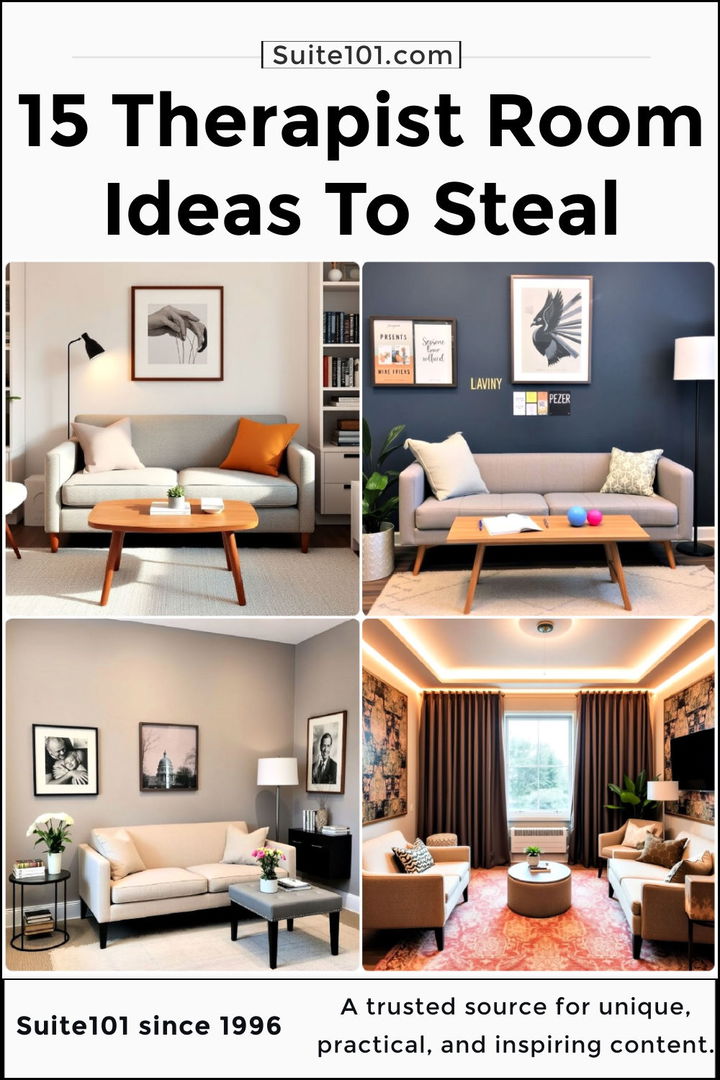
When designing a therapy space, it's important to strike the right balance between minimalism and warmth. Too sparse, and the room feels cold; too cluttered, and it becomes overwhelming. The goal is to create a calm, healing environment that allows clients to relax and engage fully in their therapeutic journey, enhancing the effectiveness of each session.
1. Incorporate Soft, Neutral Colors

Soft, neutral tones like beige, light gray, or pale blue can create a calming atmosphere in a therapy room. These shades are soothing to the eye and help clients feel more relaxed. Avoid overly bright or dark colors that might evoke strong emotions. Instead, opt for muted tones that provide a serene backdrop, allowing both therapist and client to focus on the session without distraction.
2. Use Comfortable Seating
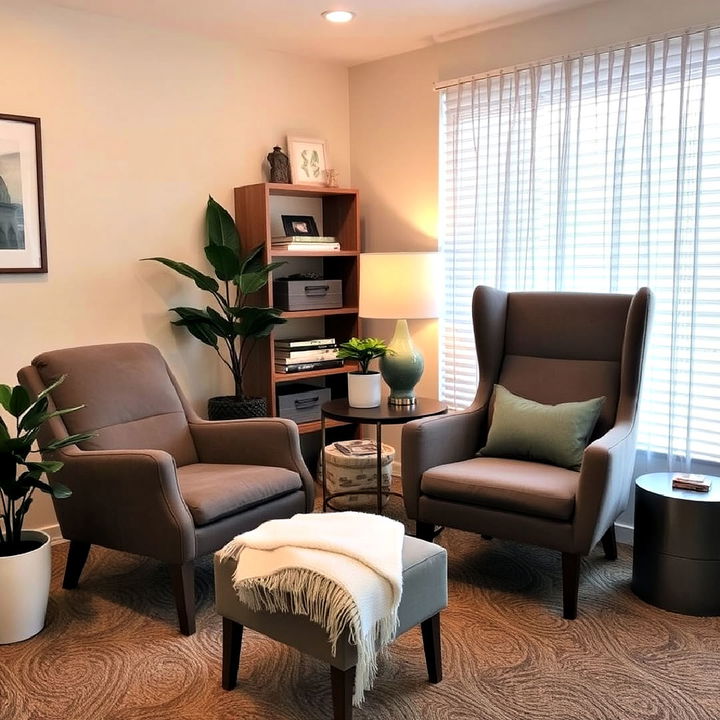
A therapist's room should prioritize comfort. Invest in plush, supportive chairs or sofas that allow clients to sit comfortably for extended periods. Ergonomically designed seating can also reduce physical discomfort, making it easier for clients to open up. Add pillows or blankets to create a cozy, welcoming environment where clients feel at ease.
3. Integrate Natural Light
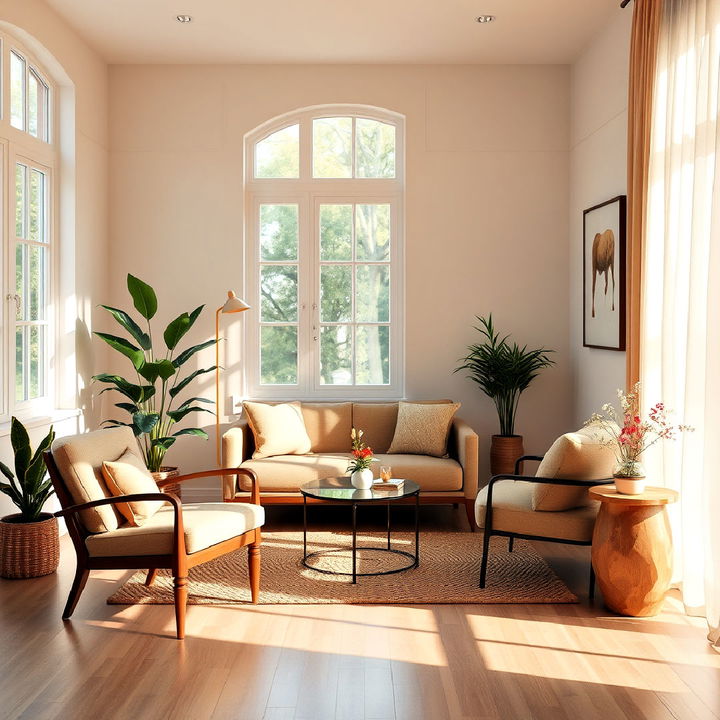
Create a calming space with inspiring therapy room ideas that promote relaxation and healing. Natural light can have a profound impact on mood, making it a valuable element in any therapy room. Position furniture near windows or use sheer curtains to allow sunlight to flow in. For rooms without windows, consider using soft, warm artificial lighting to mimic natural light. This helps create a bright and uplifting atmosphere conducive to healing.
4. Add Greenery with Plants
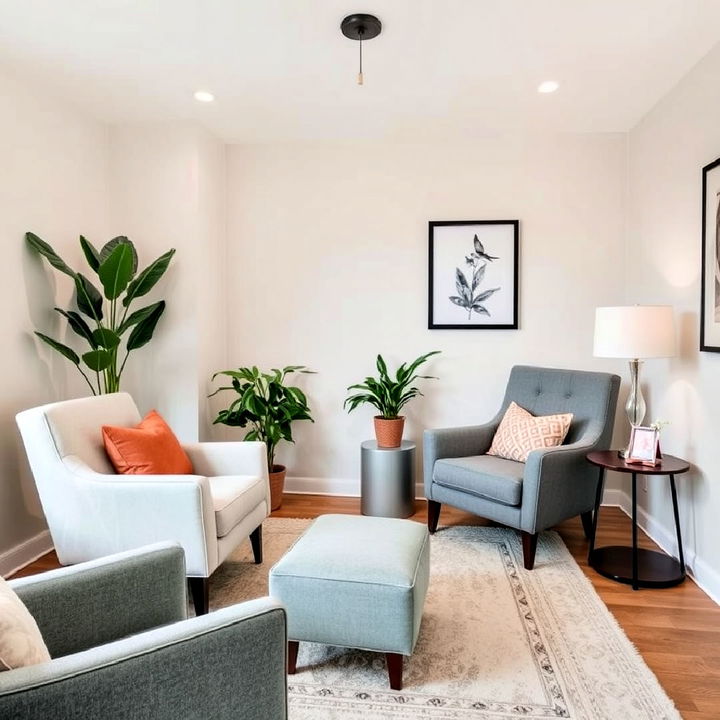
Introducing plants into a therapy room brings a touch of nature indoors, which can have calming and restorative effects. Select low-maintenance plants like succulents, snake plants, or peace lilies that thrive indoors. These natural elements not only improve air quality but also create a sense of peace and tranquility, helping clients feel more grounded during sessions.
5. Utilize Soft Textures and Rugs
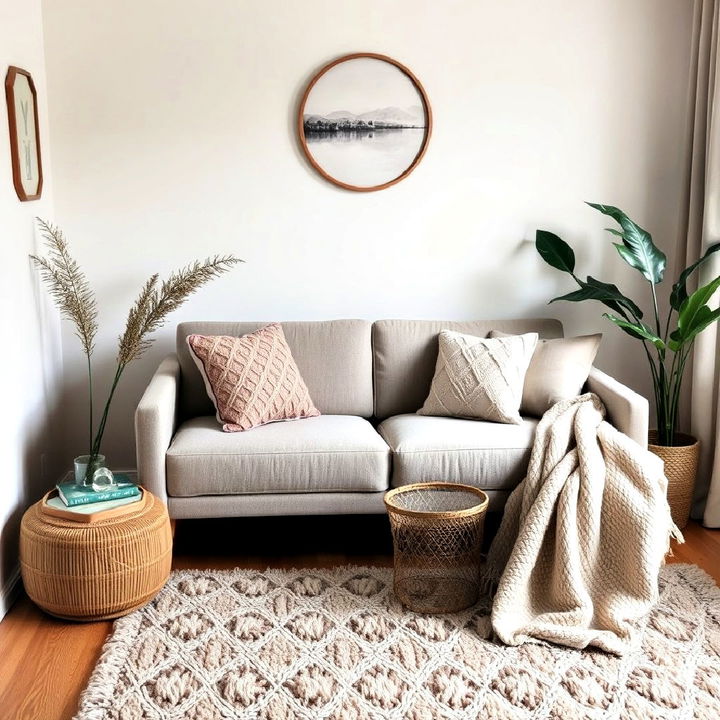
Incorporating soft textures through rugs, blankets, and cushions adds warmth to the space and enhances the sense of comfort. Choose tactile materials like wool, cotton, or velvet to foster a nurturing environment. A plush area rug can also help absorb sound, reducing echoes and making the room feel more intimate and quiet.
6. Display Minimalist Artwork

Art can influence the mood of a room, so choosing minimalist, calming pieces for a therapy space is ideal. Opt for abstract designs or nature-inspired artwork in soft colors that won’t overwhelm the senses. These subtle visuals encourage relaxation and allow clients to focus without unnecessary distractions. Keep the art simple, yet meaningful, to promote a serene atmosphere.
7. Install Noise-Reducing Elements

Soundproofing a therapy room is essential to ensure privacy and minimize distractions. You can use heavy curtains, acoustic panels, or even wall tapestries to absorb noise. Thick rugs and upholstered furniture can also help reduce sound from outside or adjacent rooms. This allows for a more focused and intimate session, free from unwanted interruptions.
8. Provide Soft Lighting Options
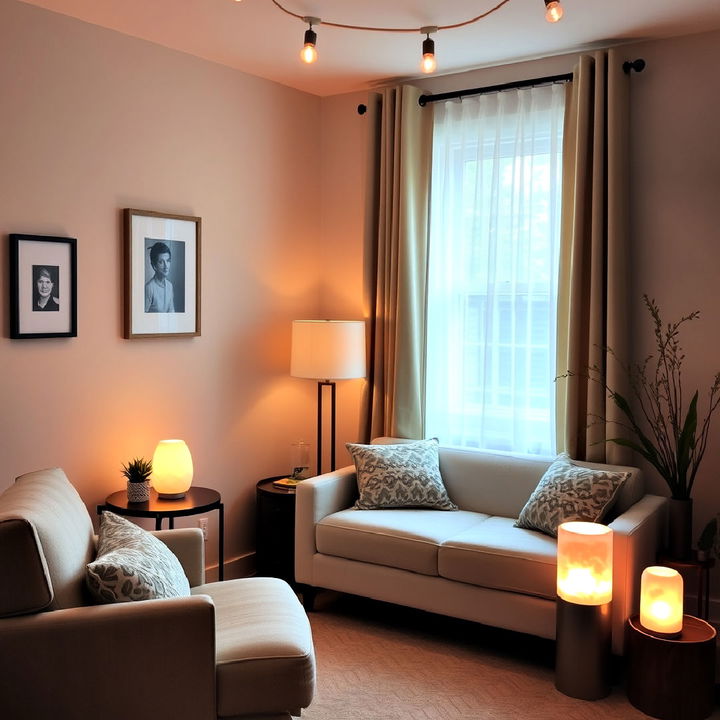
Design a welcoming and professional therapist room that fosters comfort and trust for clients. Harsh lighting can be jarring, so soft, diffused lighting is essential in a therapy room. Table lamps with warm bulbs, dimmable overhead lighting, or salt lamps can create a gentle, comforting ambiance. Offering various lighting options allows the therapist to adjust the brightness depending on the client’s needs, enhancing comfort and creating a calming environment.
9. Create a Dedicated Relaxation Corner
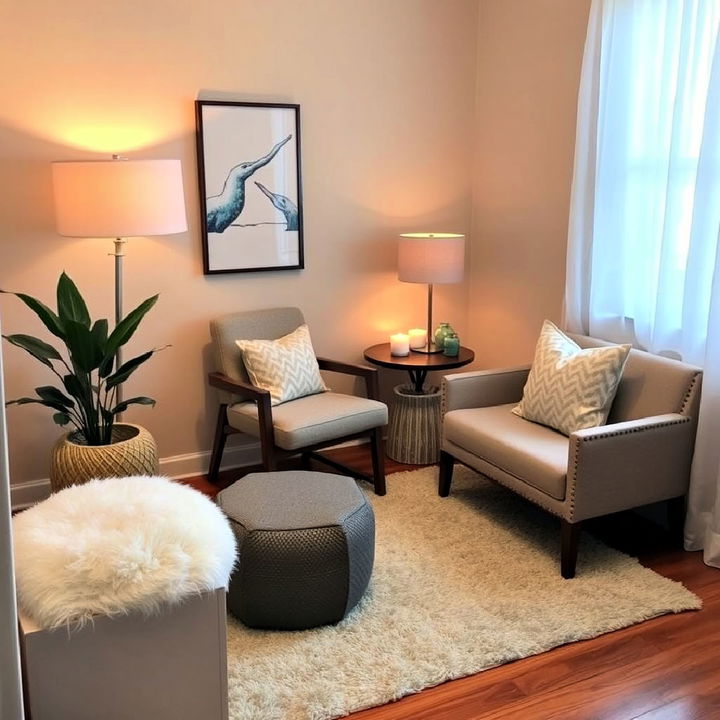
Setting up a small relaxation corner in the therapy room can offer clients a space to decompress before or after sessions. Use a comfortable chair, a soft rug, and a few calming elements like candles or essential oil diffusers. This dedicated space can help clients feel more at ease and transition into a reflective state, preparing them for deeper conversations.
10. Incorporate Sensory Elements

Engage the senses with subtle additions like essential oil diffusers, textured blankets, or a small water fountain. Aromatherapy can be particularly soothing—lavender, chamomile, or eucalyptus scents can help clients relax. A water fountain’s gentle trickling sound creates a serene atmosphere, further helping clients ease into their therapy sessions.
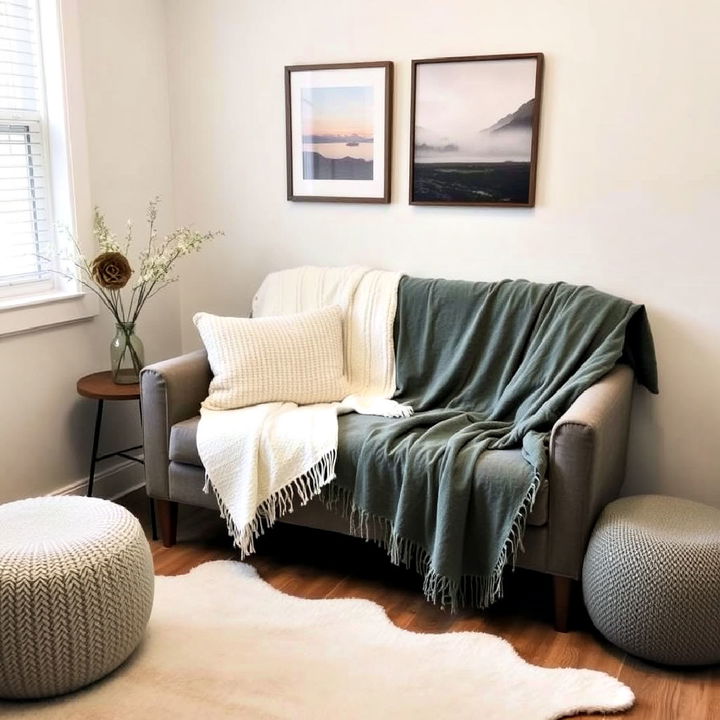
Providing soft blankets in the therapy room adds a layer of physical and emotional comfort. Clients may appreciate the option to cover themselves during sessions, especially if they feel vulnerable or cold. Opt for neutral-colored blankets made of cozy materials like fleece or cotton, ensuring they contribute to the warm, welcoming environment.
12. Organize the Space with Simple, Clean Lines
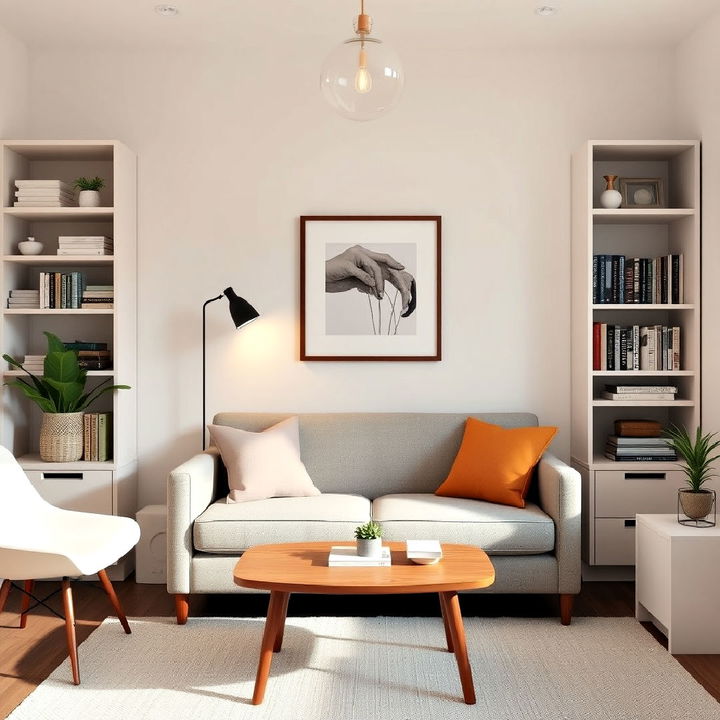
Clutter can create stress and distraction, so keeping the therapy room organized and minimalist is key. Use simple furniture with clean lines and plenty of hidden storage options to keep the room tidy. Bookshelves, cabinets, and storage bins should blend seamlessly into the design, helping maintain an orderly, distraction-free environment where clients can focus.
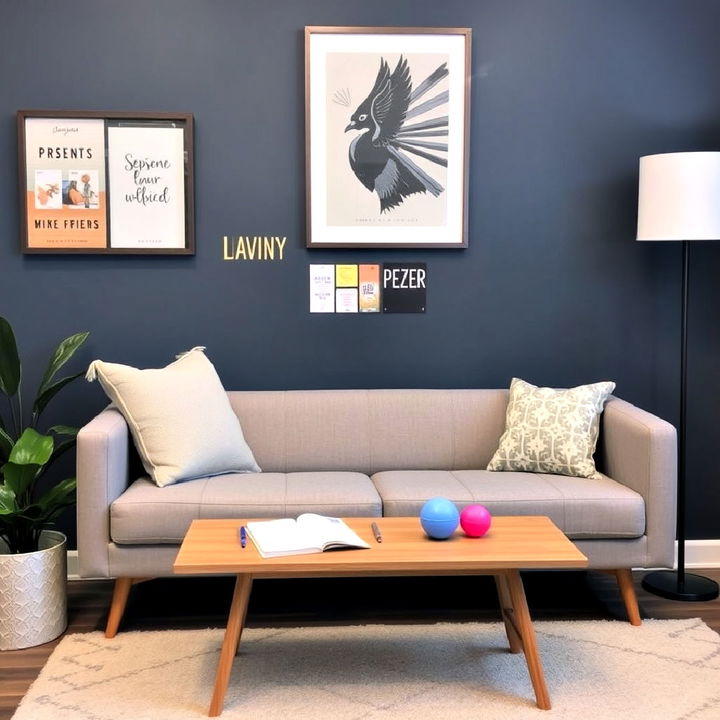
Keep therapeutic tools like journals, pens, stress balls, or mindfulness cards easily accessible in the room. These items can be used during sessions to help clients engage in various techniques or exercises. Having them within reach fosters a hands-on, interactive therapy experience, helping clients feel more involved and supported.
14. Add Personal Touches Without Overwhelming the Space
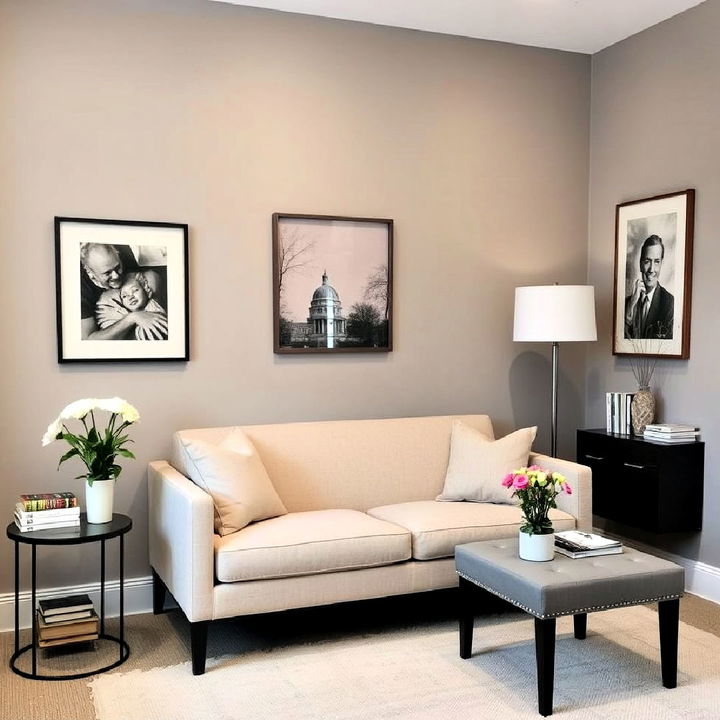
Enhance client comfort with a soothing counseling therapy room designed for effective, peaceful sessions. While it's essential to keep the room neutral and professional, adding a few personal touches can make it feel more inviting. A small collection of meaningful books, a carefully chosen sculpture, or a vase of fresh flowers can add character without cluttering the space. These elements create a welcoming, lived-in atmosphere that can make clients feel more comfortable.
15. Keep Air Circulating with a Small Fan or Air Purifier
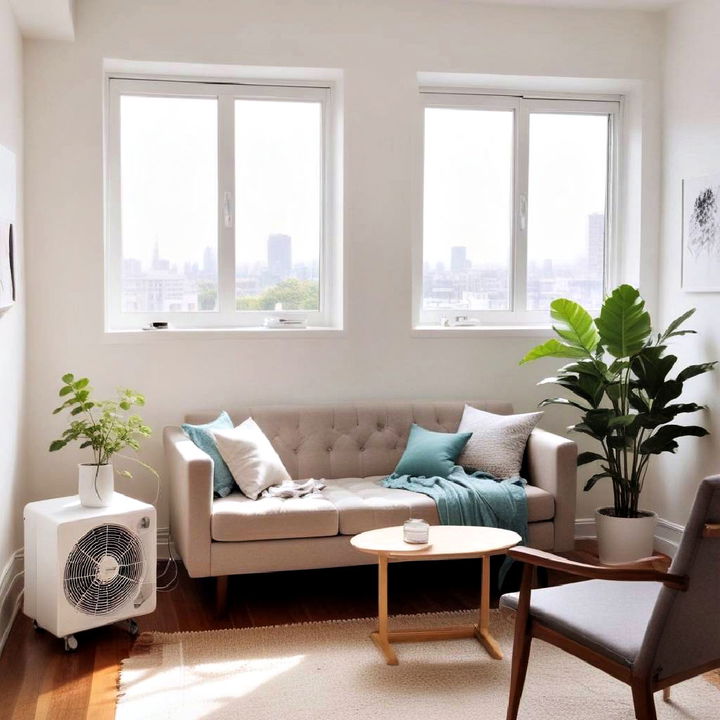
Fresh air contributes to a clear, focused mind, making ventilation essential in a therapy room. If windows aren’t an option, use a small fan or an air purifier to keep the air flowing. This not only helps maintain air quality but also prevents the room from feeling stuffy, ensuring clients can breathe easily and focus on the session.
Conclusion:
A well-designed therapist room can be transformative, fostering deep relaxation and healing for clients. Soft, neutral colors, comfortable seating, and the strategic use of natural light create a welcoming environment. Adding therapeutic tools, blankets, and personal touches makes the space feel inviting without being overstimulating. By integrating these simple yet impactful elements, you can craft a therapy room that feels like a true haven for healing and self-reflection, boosting the overall effectiveness of your practice.
Key Points:
- Soft, neutral colors create a calming and balanced atmosphere.
- Comfortable seating ensures clients feel relaxed and supported during sessions.
- Natural light and greenery bring warmth and vitality into the space, promoting a connection with nature.
- Soft textures, rugs, and minimalist artwork enhance the room's soothing ambiance.
- Noise-reducing elements, soft lighting, and sensory touches help minimize distractions and elevate relaxation.
- Organizing the room with clean lines and personalizing it thoughtfully keeps the environment both functional and welcoming.
What to Do Next:
Ready to transform your therapy room into a peaceful sanctuary for healing? Start by assessing your space, identifying areas that could use more comfort, light, or personalization. Small adjustments, like introducing plants or rearranging the seating, can make a significant difference. For more design inspiration, consult with an interior specialist or explore our curated list of therapeutic decor ideas. Create a space that not only soothes your clients but also enhances their journey toward wellness and self-discovery.